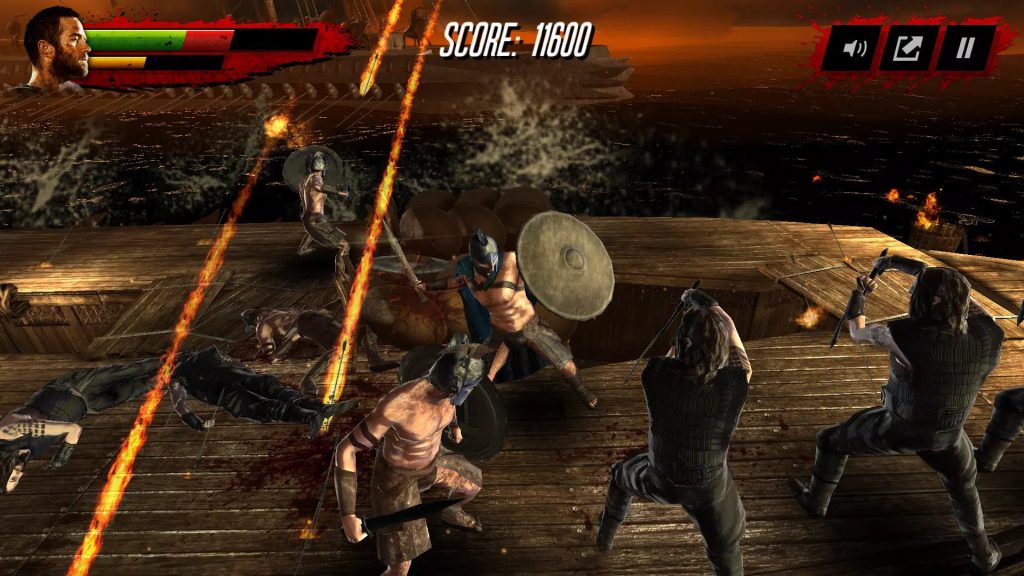“300: Rise of an Empire” has been criticized in some of the same ways as “300.” The films are superficial, violent, self-important, over-styled, and lack humor.
Instead of being audacious and visually stunning, the first film’s sequel is campy and repetitive. Even facing certain death, King Leonidas and his burly Spartans would not surrender.
In the new film, we see how their contemporaries will never, ever, ever surrender. It will never happen. I never will.
A prequel and sequel to “300,” “Rise of an Empire” wraps around the story of the 2007 film. Leonidas’ warriors are dead, pierced by the arrows of Xerxes’ Persian army in the final shot.
Suddenly, it flashes back, then further back, then back forward, then back again, until we’re unsure of what’s happening.

Continual time-jumping requires so much exposition, either through voiceover or character dialogue, that it nearly chokes the film.
There isn’t much exhalation going on, anyway. All the actors suck in their guts and puff out their chests while watching the show.
They pose rigidly half-naked, like Crossfit propaganda posters, while reading their lifeless, leaden declarative lines.
It’s not uncommon for characters to exchange monosyllabic grunts and howls in gleeful orgasmic bursts, accompanied by digital blood spouting from their mouths. There is no doubt that the script was written in all caps.
Whether we speak loudly or softly – sometimes even in whispers – words convey great drama when they are thrown across 1,000 yards of thrashing ocean, directly into our enemy’s heart.
FILM REVIEW
A strong sequence of stylized bloody violence throughout, a sex scene, some language, and nudity are all rated R by the MPAA
A graphic novel adaptation of the 1962 film “The 300 Spartans,” about the legendary Battle of Thermopylae, “300” is written and illustrated by Frank Miller. A sequel to “Rise of an Empire,” “Xerxes,” is yet to be published.
The scope of this new version is significantly broader than its relatively simple and focused predecessor. Even though it complicates the plot and introduces new characters, the result is the same: relentless and tiresome slow-motion, rending grisly warfare and carnage.
Noam Murro directed the new film, imitating “300” director Zack Snyder (with whom he also wrote the screenplay).
The crunch of an apple slice wouldn’t be complete without Murro decelerating the film whenever a character ate it. It would be possible for him to reduce the run time by 40 percent if he normalized all the slo-mo.
Persia and Sparta are engaged in a conflict involving Athena, the great Greek metropolis. Despite having fleshy hunks of muscle, armoresque abs, rough and hairy faces, and meticulously waxed chests, Spartan men pose and flex the same way as Athenians.
The only thing that separates them is their cape colors. It is the Athenians’ leader Themistokles (Sullivan Stapleton) who primarily delivers thrice-removed speeches similar to those from Braveheart.
He is the one who shot the arrow into Xerxes’ father, allowing the narrative to explore the origin of the Persian giant (Rodrigo Santoro, reprising his role). As another holdover from “300”, Gorgo (Lena Heady) weaves two legends into the Spartan story.
This screenplay requires more than three legends. Xerxes adopted Artemisia, a Greek woman by birth and a former slave whose family was raped and murdered by Spartans. Despite his enormous naval fleet, she commands it.
Eva Green plays her, the only cast member who appears to be aware of the script’s inherent campiness.
With wide, black-eyed eyes caked with gallons of eye shadow, an arrogant, emotionless sneer, dresses shredded at the hem like the Wicked Witch of the West, or spiked with dragons, her appearance exudes a crazy lady.
A prisoner is decapitated and kissed on the lips. For a moment, Artemisia and Themistokles pause the noisy warfare for a moment to negotiate surrender – which seems unlikely to ever happen – and what follows is a sex scene that is offensive and stupid, surely humiliating for the actors.
“Rise of the Empire” attempts to raise the stakes with enormous set pieces, such as naval battles in which huge oarships ram one another, tearing wood apart and throwing bodies into the air or spewing oil into the water, which is set alight by flaming arrows.
As if these are the battles of men spawned by gods, Murro does not skimp on hand-to-hand combat, which is staged as like professional wrestling with swords and shields.
Murro recreates Snyder’s copper-tinted CGI world, with soft fingers of sunlight filtering through the clouds and an impossibly large full moon looming on the horizon.
As the good guys are once again outnumbered, they jump headfirst into certain death (or maybe not), blood splashing on the camera lens, and the choral score exhaling like a million zillion singers doing a million abdominal crunches.
It is common for characters to stare unblinkingly into the distance, perhaps dreaming of a better script and a better movie with better dialogue and more sophisticated wardrobes than leather speedos and snatches of fabric. An exercise in extremes rendered sublimely dull, the film is deeply, irredeemably silly.









